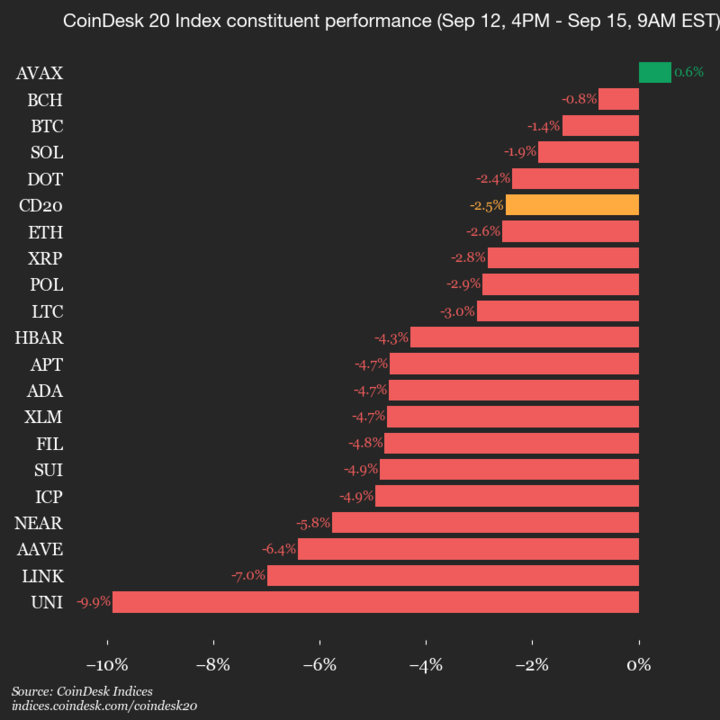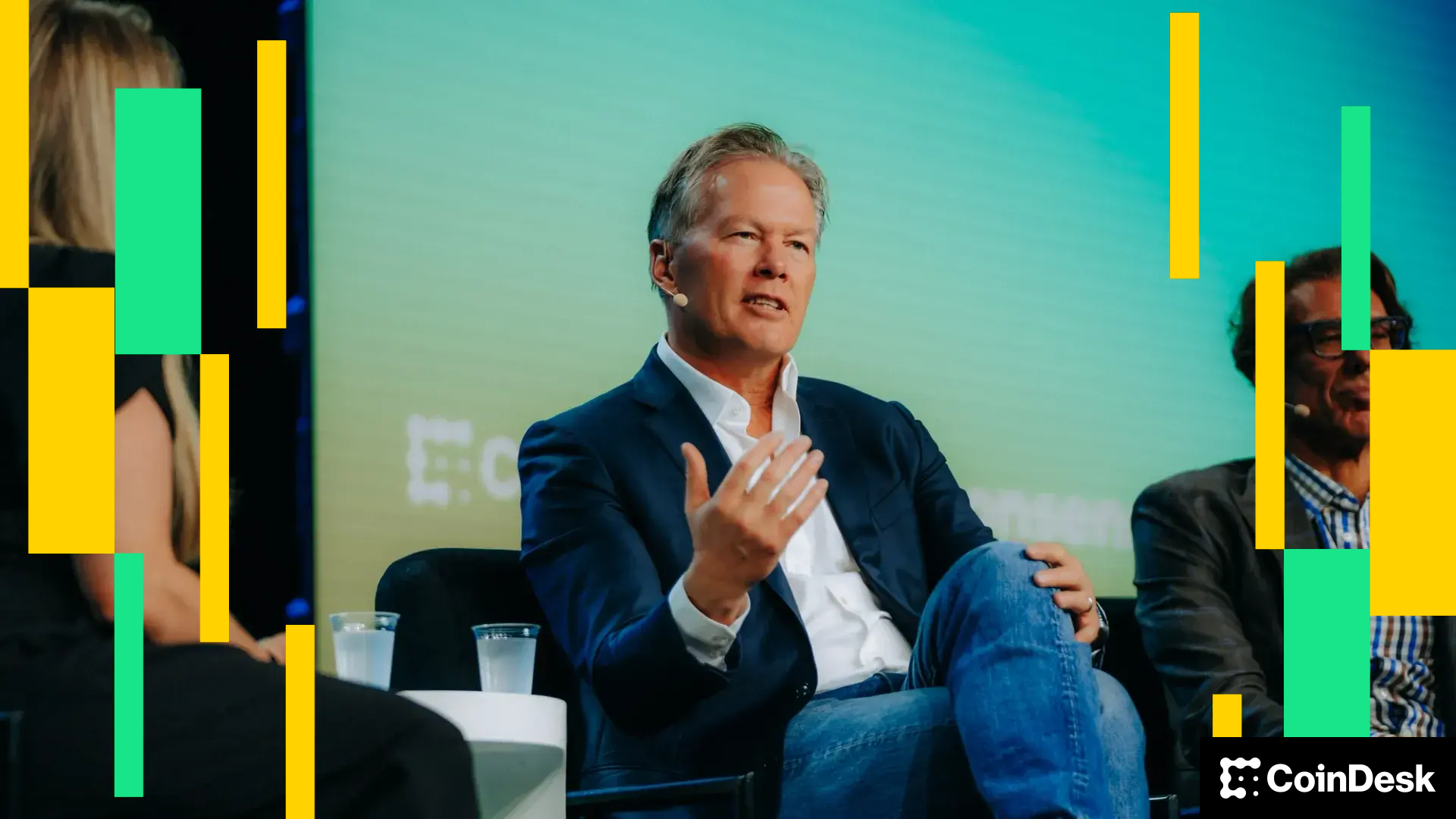Uncategorized
Could ‘Based Rollups’ Solve Ethereum’s Layer-2 Problem?

The Ethereum community has been in turmoil over the past few weeks, with members raising the alarm that the chain will lose its competitive edge if it doesn’t address some core design issues.
A key focus of the outrage has been layer-2 fragmentation. In recent years, Ethereum has embraced a layer-2 scaling roadmap—a plan that encouraged the development of third-party auxiliary networks called «layer-2 rollups»—to help scale the base Ethereum ecosystem. Offloading activity to these upstart networks has helped bring down fees and improve speeds for end-users, but it has led to a massive, deeply fragmented ecosystem of layer 2s.
While layer-2 networks all post data back down to Ethereum, they often struggle to communicate directly with one another, meaning passing assets and data between them can become expensive and cumbersome. There’s also the risk of centralized sequencers: reliance on company-controlled black boxes to pass transaction data between blockchain layers.
As layer-2 chains continue to proliferate, some Ethereum developers are pushing rollup tech that takes a new approach to security and interoperability: “based rollups.»
Based rollups
Based rollups differ from most existing rollups because they shift execution duties—such as processing transactions—back to Ethereum’s layer-1 rather than handling them on a separate layer-2 network.
When someone transacts on a layer-2 rollup, their transaction is processed through a component called a “sequencer.” The sequencer batches multiple transactions and submits them to Ethereum for settlement. In most rollups today, this sequencer is centralized, meaning a single entity (usually the company that built the rollup) controls the ordering and posting of transactions.
Centralized sequencers are currently a topic of debate in the Ethereum community. While sequencers provide efficiency and generate revenue for rollup operators by strategically ordering transactions, they also introduce a single point of failure. A malfunctioning or malicious sequencer can delay or manipulate transactions, raising concerns about censorship and reliability.
Based rollups avoid this vulnerability by using Ethereum’s built-in sequencing—its massive community of validators—rather than a single centralized sequencer.
The layer-2 roadmap evolution
In 2022, Ethereum co-founder Vitalik Buterin laid out his vision for a rollup-centric roadmap. The plan proposed using layer-2 rollups to side-step the base chain’s high fees and slow transaction speeds.
Different rollups employ different strategies for keeping down costs and boosting speeds, but they are all designed to uphold decentralization and security—meaning (in theory) the networks shouldn’t be centrally run, and the transactions they shepherd to Ethereum are free from tampering.
Rollups like Optimism, Arbitrum, Base, zkSync, and Blast have quickly grown to support larger transaction volumes than Ethereum itself. According to L2Beat, there are currently 140 live layer-2 networks, but the experience of operating between them—passing assets and other data between networks—has become clunky. As Ethereum becomes bigger and layer-2 networks become more integral to its functioning, improving communication between layer-2s—in other words, improving «composability»—has become more important than ever.
Because based rollups share the sequencer from the layer-1 chain (sometimes referred to as the layer-1 «proposer»), they can call on smart contracts on other based rollups within seconds, making it easier to access and exchange data across layer-2s.
“They effectively share a sequencer with each other and also with the layer-1 and that allows the sequencer now to coordinate messages passing between different based rollups, whereas normally message passing happens in an asynchronous fashion,” said Ben Fisch, the CEO of Espresso Systems, in an interview with CoinDesk.
Since based rollups all use Ethereum’s built-in sequencing, they can interact with one another instantly, in blockchain terms—all within the same Ethereum block.1
“You could have, in the span of one Ethereum block, a based rollup withdraw assets, do something in the layer-1, deposit the assets back, do something in the layer-2 and withdraw assets again,” Fisch told CoinDesk.
Some drawbacks
A few projects are looking to use based technology, but only one based rollup, Taiko, is currently live.
While rollups like Taiko present clear benefits, they will need to overcome some technical hurdles before they can be more widely adopted.
One major challenge is proof generation. When a based rollup submits transaction data to Ethereum, it must generate and publish proofs every 12 seconds—matching Ethereum’s block time. Currently, layer-2 rollups use two types of proof systems: zero-knowledge (ZK) proofs, which finalize in minutes, and optimistic proofs, which take up to seven days to suss out potential fraud.
For based rollups to function efficiently, proof generation speeds would need to align with Ethereum’s block time—a significant technical leap. However, Fisch says a breakthrough on this front could be «imminent. «
The other pitfall is Ethereum’s block producers, or «layer-1 proposers.» In based rollups, these proposers take over the role of sequencing transactions. But their primary motivation isn’t necessarily fairness—it’s profit
“Layer-1 proposers are not trusted entities that are working in the interest of the layer-2, they are economically motivated to make as much money as they can,” Fisch said. “So they may confirm some transactions for end users, and then see an MEV opportunity, which causes them to publish something totally different.”
MEV, or maximal extractable value, refers to the practice of reordering transactions to maximize profit, often at the expense of regular users. If proposers manipulate transactions, it could create instability in based rollups. To address this, developers are working on solutions like based pre-confirmations, which aim to add economic incentives for proposers to act in the interest of rollups.
So while based rollups may present a promising way to reduce fragmentation between layer-2s, they’re not a miracle fix. “My personal opinion is that based rollups are one part of the solution, they are not the only solution, and not all layer-2s necessarily should or will be based,” Fisch said.
Read more: ‘Sequencers’ Are Blockchain’s Air Traffic Control. Here’s Why They’re Misunderstood
Uncategorized
CoinDesk 20 Performance Update: Index Drops 2.5% as Nearly All Constituents Decline

CoinDesk Indices presents its daily market update, highlighting the performance of leaders and laggards in the CoinDesk 20 Index.
The CoinDesk 20 is currently trading at 4248.74, down 2.5% (-109.09) since 4 p.m. ET on Monday.
One of 20 assets is trading higher.

Leaders: AVAX (+0.6%) and BCH (-0.8%).
Laggards: UNI (-9.9%) and LINK (-7.0%).
The CoinDesk 20 is a broad-based index traded on multiple platforms in several regions globally.
Uncategorized
Pantera-Backed Solana Treasury Firm Helius Raises $500M, Stock Soars Over 200%

Helius Medical Technologies (HSDT) announced on Monday it’s raising more than $500 million in a private financing round to create a Solana-focused treasury company.
The vehicle will hold SOL, the native token of the Solana blockchain, as its reserve asset and aims to expand to more than $1.25 billion via stock warrants tied to the deal, the press release said.
The financing was led by Pantera Capital and Summer Capital, with participation from investors including Animoca Brands, FalconX and HashKey Capital.
Shares of the firm rallied over 200% above $24 in pre-market trading following the announcement. Solana was down 4% over the past 24 hours.
The firm is joining the latest wave of new digital asset treasuries, or DATs, with public companies pivoting to raise funds and buy cryptocurrencies like bitcoin (BTC), ether (ETH) or SOL.
Helius is set to rival with the recently launched Forward Industries (FORD) with a $1.65 billion war chest backed by Galaxy Digital and others. That firm confirmed on Monday that has already purchased 6.8 million tokens for roughly $1.58 billion last week.
Helius’ plan is to use Solana’s yield-bearing design to generate income on the holdings, earning staking rewards of around 7% as well as deploying tokens in decentralized finance (DeFi) and lending opportunities. Incoming executive chairman Joseph Chee, founder of Summer Capital and a former UBS banker, will lead the firm’s digital asset strategy alongside Pantera’s Cosmo Jiang and Dan Morehead.
«As a pioneer in the digital asset treasury space, having participated in the formation of the strategy at Twenty One Capital (CEP) with Tether, Softbank and Cantor, Bitmine (BMNR) with Tom Lee and Mozayyx as well as EightCo (OCTO) with Dan Ives and Sam Altman, we have built the expertise to set up the pre-eminent Solana treasury vehicle,» Cosmo Jiang, general partner at Pantera Capital, said in a statement.
«There is a real opportunity to drive the flywheel of creating shareholder value that Michael Saylor has pioneered with Strategy by accelerating Solana adoption,» he added.
Read more: Solana Surges as Galaxy Scoops Up Over $700M Tokens From Exchanges
Uncategorized
American Express Introduces Blockchain-Based ‘Travel Stamps’

American Express has introduced Ethereum-based ‘travel stamps’ to create a commemorative record of travel experiences, as part of the firm’s revamped travel app.
The travel experience tokens, which are technically NFTs (ERC 721 tokens), are minted and stored on Coinbase’s Base network, said Colin Marlowe , VP, Emerging Partnerships at Amex Digital Labs.
The travel stamps, which can be collected anytime a traveler uses their card, are not tradable NTF tokens, Marlowe explained, and neither do they function like blockchain-based loyalty points – at least for the time being.
“It’s a valueless ERC-721, so technically an NFT, but we just didn’t brand it as such. We wanted to speak to it in a way that was natural for the travel experience itself, and so we talk about these things as stamps, and they’re represented as tokens,” Marlowe said in an interview.
“As an identifier and representation of history the stamps could create interesting partnership angles over time. We weren’t trying to sell these or sort of generate any like short term revenue. The angle is to make a travel experience with Amex feel really rich, really different, and kind of set it apart,” he said.
The Amex travel app also includes a range of tools for travels and Centurion Lounge upgrades, the company said.
-

 Business11 месяцев ago
Business11 месяцев ago3 Ways to make your business presentation more relatable
-

 Fashion11 месяцев ago
Fashion11 месяцев agoAccording to Dior Couture, this taboo fashion accessory is back
-

 Entertainment11 месяцев ago
Entertainment11 месяцев ago10 Artists who retired from music and made a comeback
-

 Entertainment11 месяцев ago
Entertainment11 месяцев ago\’Better Call Saul\’ has been renewed for a fourth season
-

 Entertainment11 месяцев ago
Entertainment11 месяцев agoNew Season 8 Walking Dead trailer flashes forward in time
-

 Business11 месяцев ago
Business11 месяцев ago15 Habits that could be hurting your business relationships
-

 Entertainment11 месяцев ago
Entertainment11 месяцев agoMeet Superman\’s grandfather in new trailer for Krypton
-

 Entertainment11 месяцев ago
Entertainment11 месяцев agoDisney\’s live-action Aladdin finally finds its stars





